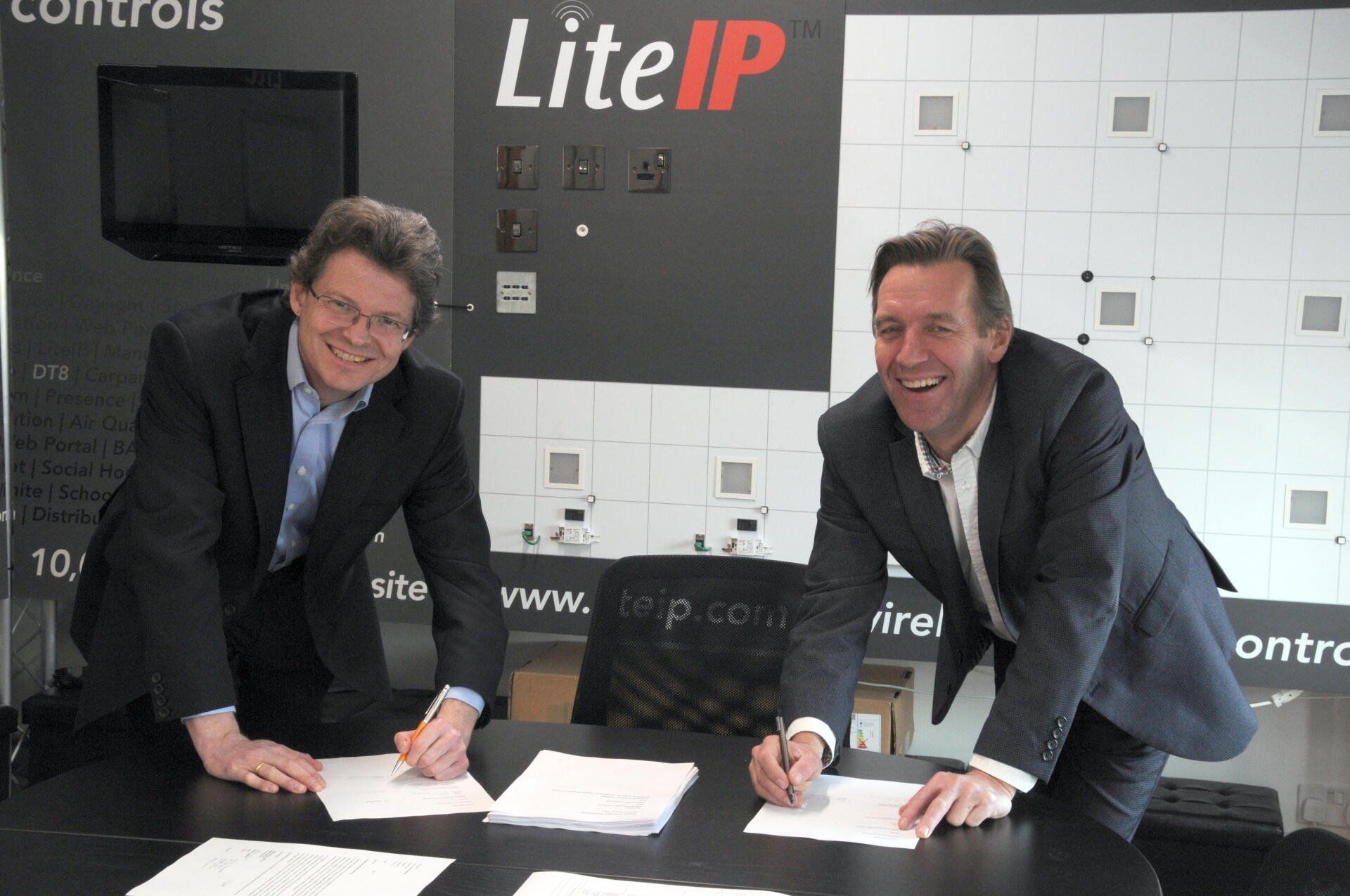Top 6 questions to ask yourself when planning commercial lighting controls
The energy saving benefits of LED lighting are long established but if you’re in charge of a lighting refurbishment project there are many things to consider. Here are our top 6 questions to ask yourself before getting started…

1. What type of control do I need?
Basic LED panels, weatherproofs or highbays offer between 50%-60% energy saving over traditional fluorescent fittings. Incorporating DALI drivers and remote presence sensors can increase these savings to around 80% but increased install costs may mean that the payback period doesn’t add up.
In addition, hardwired solutions can be costly to maintain and changing occupancy groups in the future brings additional cost and disruption to the workplace.
Here at LiteIP, we aim to increase energy savings by incorporating lighting controls which allow for small presence groups and daylight control with the increased luminaire cost offset by simplified installation. Over the life cycle of your installation, presence and daylight groups are changed using a tablet app so, as your requirements change, your lighting can change with you.
2. How can I implement this?
Most retrofit solutions are installed on a point for point basis, which is simple for the installer but you many be left with an LED installation which is much brighter than you require. Luminaires which cannot be dimmed or can only be dimmed in large groups are unlikely to suit the whole team.
Also consider the fabric of your building. If you want to install a new configuration of luminaires or are looking at hardwired controls, can this be achieved if you have concrete ceilings or inaccessible wiring in conduit?
We tackle this in a number of ways:
- Each luminaire includes a presence sensor and wireless node. There is no wiring between fittings
- We don’t need to know the configuration of the area until commissioning
This means the installer doesn’t need to know they are installing luminaires with controls.
It also allows for multiple scenarios and simple changes to settings using the simple tablet app:
- Individual lights or groups of lights can have their maximum on level reduced
- You can adjust your office or production lighting to the benefit of all employees
3. What type of presence detection should I use? – Integral vs. Remote & PIR vs. Microwave
Traditional upgrades might add one presence sensor per room or zone and require hardwiring. As we’ve already discussed, this restricts detection and doesn’t future proof your installation.
Installing a detector in every fitting with our system has multiple benefits:
- Ensure you always get the detection you need by grouping small numbers of luminaires together
- Overlap groups to maintain detection as employee working patterns change
- No wiring in between fittings
- Benefit from our energy reporting functionality (we’d love to tell you more about this!)
You should also consider whether microwaves or PIRs are the best option. Our team can guide you through this process to ensure you receive the best solution for your environment.
4. Will daylight controls benefit my installation?
Daylight sensing is generally simple technology but is often poorly utilised in commercial buildings. Daylight sensors can only measure the light level on the sensor itself, so their placement is very important to ensure they operate correctly.
We aim to simplify the process by using wireless sensors which only require LNE connection and can easily be installed on commissioning or moved by installers to bring maximum daylight savings.
Daylight always takes precedence over presence detection with our system and therefore energy savings are maximised. If you have skylights in your warehouse or large windows in your office we would always suggest including daylight sensors in your installation.
5. What about Emergency Testing?
All commercial buildings should have adequate emergency lighting and your lighting manufacturer will advise you on quantities and positions.
Installation and maintenance of emergency lighting should be a key consideration for the ongoing success of your project. The LiteIP system can help in a number of ways:
- We only need LNE for emergency luminaires when used with compatible self-test emergency gear. This simplifies the installation
- Luminaires test themselves so there is no need for manual key switch testing by your maintenance team
- Fault statuses can be gathered by site walkarounds on the tablet or automatically by our Collators to be viewed on any internet enabled device
- We catergorise faults so that engineers know what is wrong before they get to the luminaire
We’re also innovating. We can now offer advanced emergency reporting which shows times and dates of tests and in 2022 we will introduce our DALI scheduler to allow you to schedule tests for convenient days and times.
6. Should I consider Colour Temperature and Circadian Rhythms?
Have you considered the colour temperature of the luminaires you install?
Colour temperature has a direct impact on the building environment and can adversely affect occupants if incorrectly specified. Speak to your lighting manufacturer to ensure they select the correct colour temperature for your application.
We can also help, LiteIP controllers can be used with tunable luminaires. These are light fittings which can operate at multiple colour temperatures. This means they can be changed on the app but also throughout the day by collators to help with our natural circadian rhythm.
LiteIP have solutions for presence detection, daylight sensing and colour temperature to suit your lighting upgrade project. We’d love to discuss it with you in more detail – contact us at enquiries@liteip.com

LiteIP Limited is a company registered in England and Wales with company number 08317714.

